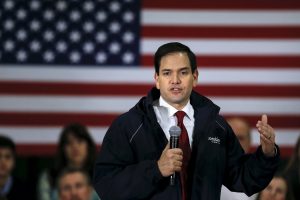One of the drivers for this change are influencers, who are expected to have earned over US$30 billion globally by the end of this year showcasing clothes, makeup and cars on their popular channels on Meta, TikTok and Youtube. Their deals range from a few hundred dollars to a few million, with Ronaldo asking US$3,234,000 for a single post. Nowadays, being “Instafamous” is a valid career option, with over 1 in 4 Gen Z-ers in the US planning to become one. For the brands, influencer marketing is a profitable tool, too, as it is estimated to deliver a return on their investment that is 11 times higher than other forms of promotion on digital media.
As Dior found out, however, there can be such a thing as too much of a good thing. A few years ago, while relaunching the iconic Saddle Bag that John Galliano had originally designed for the luxury fashion house, Dior decided to communicate it with a bang. The bag first became a must-have item in the early years of the millennium, because it was seen hanging off the arms of Beyoncé, Paris Hilton, and Sex and the City’s Carrie Bradshaw. To announce its return two decades later, the brand gifted it to 100 influencers around the world, giving them the freedom to display it as they liked to their numerous followers; the only condition was that they all post simultaneously.
Within a 24-hour period, the Saddle Bag featured in the posts of global celebrities and bloggers such as Miranda Kerr, Chiara Ferragni, Susie Bubble, Lena Perminova and Bryanboy, and local influencers like Jing Tian and Leaf Greener in China. This was quickly picked up by their followers, whose news feeds were filled with different versions of the bag in an impressive extravaganza of colorful images.
Soon, however, fashion bloggers started remarking that this flood of content had saturated the market and, in their influential eyes at least, cheapened the brand. Luxury brands are associated with exclusivity, scarcity and a certain lifestyle, all of which were jeopardized by the brand’s move to make it seem so readily available. In addition, the brand had no control over the quality of the content. In China, the video former model and current influencer Elle Lee shot by herself to showcase the bag resembled a cheap and kitschy telemarketing ad more than it did the high-quality content the brand should be associated with.
More importantly, this campaign tactic breached the US Federal Trade Commission’s (FTC) guidelines for Endorsements, Influencers and Reviews online, as pointed out by the Instagram account Diet Prada. This fashion industry watchdog noted that almost none of the posts indicated that the bags were provided by the brand, and thus constituted payment for the influencer’s services in promoting the goods. Sponsored Content, or #SponCon in marketing lingo, should be clearly marked as such, with disclaimers that indicate the paid character of the content, including the provision of free products, and the sponsor behind it.
Such regulation is in place to protect the public from misleading recommendations, and is now being rigorously monitored at the national level in European countries, too. Influencer Legal Hub is the portal to the European Commission’s regulation for Influencer Marketing, which also involves the taxation of such exchanges, which often happen under the radar, as in the Dior Saddle Bag case. The Greek Ministry of Development recently started examining influencers’ activities on social media with the dual purpose of identifying misleading content and tax evasion. The first cases are already being reported, and more are likely to follow, as in the rest of Europe.
Whether producers, marketers or consumers, we should all be acquainted with the regulations pertaining to influencer marketing. As for influencers and brands that are new to the game, our advice is to set up and manage your collaborations through platforms that will uphold the legal aspect of the deal.
Dear influencers, we like you. We follow you. But don’t mislead us.
*Dr. George Kyparissiadis is Assistant Professor & Program Coordinator of the Master of Arts Program in Advertising Communications at Deree – The American College of Greece



